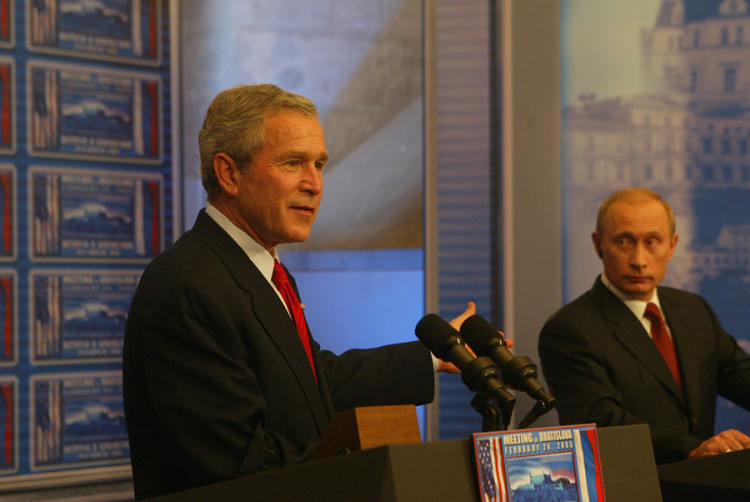For Strategic Oil Reserve, Question May Be How Low Can You Go?

©2015 Bloomberg News
NWWIK16JIJV4
(Bloomberg) — Eight years ago, then-President George W. Bush called on Congress to double the size of the Strategic Petroleum Reserve to 1.5 billion barrels. Now, with U.S. imports and demand dropping, the question has become: How low can it go?
Under a budget deal reached Monday night by Republican leaders and the White House, 58 million barrels of oil would be sold from the reserve from 2018 through 2025, with the proceeds going to the Treasury Department. Congress must still vote on the proposal, which has the Obama administration’s support.
The shale boom has decreased the need for such a large reserve, according to Carl Larry, director of oil and natural gas issues in Houston for consultant Frost & Sullivan Inc. Congress authorized the reserve in 1975, in the aftershock of the Arab oil embargo, to insulate the nation from future disruptions.
“It’s safe to start selling the SPR now,” Larry said in a phone interview.
Drawdowns reach “a dangerous level only when you have demand in America going up really high, or the opposite, when we see production drop to a drastic level.”
The budget deal would diminish the 695 million-barrel reserve by 8 percent at a time when the U.S. has become the world’s largest oil and gas producer. U.S. crude-oil imports have declined by more than 25 percent since peaking in 2005 at 10.1 million barrels a day, according to the Energy Information Administration. The boom has spurred oil producers to press the Obama administration to allow the U.S. to export more crude.
Prices Sinking
The sale would also come after U.S. oil prices have fallen by more than half since June 2014. West Texas Intermediate, the U.S. benchmark, settled at $43.20 a barrel Tuesday on the New York Mercantile Exchange. The average price of the oil in the reserve is $29.70 a barrel, according to the Energy Department. That estimate doesn’t adjust for inflation or storage costs.
The Congressional Budget Office predicted Tuesday that oil would cost $70 a barrel in 2018, when sales begin, and increase to $95 in 2025, when 10 million barrels would be sold. Altogether, the sales are estimated to bring in $5.05 billion. The energy secretary would have the ability to halt sales if supplies dropped below certain thresholds.
In 2000, imports made up such a large proportion of U.S. supplies that the reserve could cover only 111 days if the Organization of Petroleum Exporting Countries cut off shipments. Last year, that figure reached a high of 274 days, according to data compiled by Bloomberg. The oil market won’t be much affected by the sale, wrote Rob Barnett and Cheryl Wilson, analysts for Bloomberg Intelligence. With U.S. consumption at about 7 billion barrels a year, or 19 million barrels a day, the sale of 5 million barrels starting in 2018 is small relative to the size of the market, they wrote.
Earlier Sales
It wouldn’t be the first time that the reserve has been tapped to raise funds — in 1996 and 1997 the government sold 23 million barrels to help reduce the federal budget deficit.
In July, the Senate passed a transportation-funding bill that would raise money in part by selling an additional 101 million barrels from the reserve over eight years. That measure, separate from the budget deal, hasn’t become law.
“It’s really unfortunate to sell a strategic asset to cover a budget shortfall,” David Goldwyn, a former State Department special envoy for international energy issues, said in a phone interview Tuesday. “What we really have to worry about are global disruptions” to oil supplies, he said.
The final sale tally may be closer to 100 million barrels because the proposal allows for the Energy Department to raise as much as $2 billion for modernization of the reserve facilities, Kevin Book, managing director of Washington-based ClearView Energy Partners LLC, said in an e-mail.
“It’s bad, it’s short-sighted,” Senator Lisa Murkowski, an Alaska Republican and chairman of the Energy and Natural Resources Committee, told Bloomberg BNA’s Ari Natter. “For all the reasons that I opposed it last time about eroding the safety net and using it as an ATM, I still worry about that.”
–With assistance from Mark Drajem and Catherine Traywick in Washington and Javier Blas in London.
To contact the reporter on this story: Brian Wingfield in Washington at bwingfield3@bloomberg.net To contact the editors responsible for this story: Margot Habiby at mhabiby@bloomberg.net Richard Stubbe, Tina Davis



No Comment